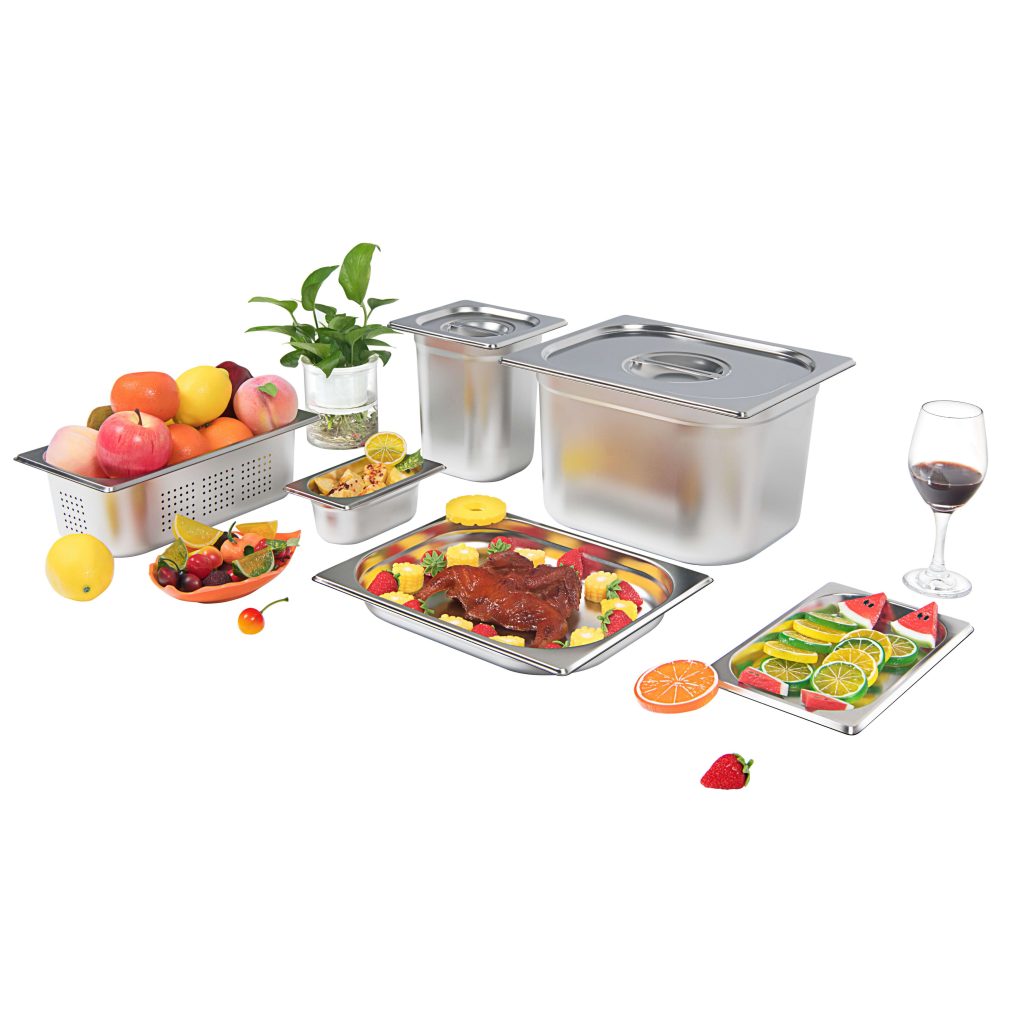Stainless Steel GN Pans: A Comprehensive Overview
Stainless steel GN pans, commonly referred to as Gastronorm pans, are essential tools in commercial kitchens, catering services, and food storage applications. These versatile containers are designed to meet the rigorous demands of professional food preparation and storage, offering durability, hygiene, and ease of use. This article delves into the material, thickness, and manufacturing processes that make stainless steel GN pans a staple in the foodservice industry.
Material: High-Quality Stainless Steel
Stainless steel is the material of choice for GN pans due to its exceptional properties. Typically, these pans are made from **18/10 stainless steel**, which contains 18% chromium and 10% nickel. This composition ensures excellent corrosion resistance, making the pans suitable for use in environments where they are frequently exposed to water, acids, and other corrosive substances. The chromium content forms a passive layer of chromium oxide on the surface, which prevents rust and staining, while the nickel enhances the steel’s luster and durability.
The use of food-grade stainless steel ensures that the pans are safe for direct contact with food. They do not react with acidic or alkaline ingredients, preserving the taste and quality of the food. Additionally, stainless steel is non-porous, which prevents the absorption of odors and bacteria, making it easy to clean and maintain.
Thickness: Balancing Durability and Weight
The thickness of stainless steel GN pans is a critical factor that influences their durability, heat distribution, and weight. Most GN pans are manufactured with a thickness ranging from **0.6 mm to 1.2 mm**.
– **0.6 mm to 0.8 mm**: Pans in this range are lightweight and ideal for light-duty applications such as cold food storage or serving. They are easier to handle and stack, making them suitable for buffets and catering events.
– **1.0 mm to 1.2 mm**: These thicker pans are designed for heavy-duty use, including baking, roasting, and frequent handling in high-temperature environments. The increased thickness provides better heat distribution and resistance to warping, ensuring longevity even under demanding conditions.
The choice of thickness depends on the intended use of the pan. For instance, a thicker pan is preferable for applications involving high heat or frequent handling, while a thinner pan may suffice for less demanding tasks.
Manufacturing Process: Precision and Craftsmanship
The production of stainless steel GN pans involves several meticulous steps to ensure quality and consistency. The process typically includes:
1. **Material Selection**: High-quality stainless steel sheets are selected based on their composition and thickness. The sheets are then cut to the required size using precision cutting tools.
2. **Forming**: The cut sheets are shaped into pans using hydraulic presses or stamping machines. This step involves forming the base, sides, and rims of the pan. The edges are carefully folded and welded to create a seamless and robust structure.
3. **Welding**: The corners and joints of the pan are welded using TIG (Tungsten Inert Gas) welding, which ensures strong and clean welds. This method minimizes the risk of contamination and maintains the integrity of the stainless steel.
4. **Polishing**: After welding, the pans undergo a polishing process to smooth out any rough edges and enhance their appearance. This step also helps to further improve the corrosion resistance of the pans by creating a smooth, non-porous surface.
5. **Quality Control**: Each pan is inspected for defects, such as cracks, warping, or uneven surfaces. The dimensions are checked to ensure they conform to the Gastronorm standard, which specifies the sizes and capacities of GN pans.
6. **Finishing**: Some pans may undergo additional treatments, such as passivation, to enhance their corrosion resistance. Others may be coated with a non-stick surface for specific applications.
Conclusion
Stainless steel GN pans are indispensable in the foodservice industry, offering a combination of durability, hygiene, and versatility. The use of high-quality stainless steel, coupled with precise manufacturing processes, ensures that these pans can withstand the rigors of professional kitchens. Whether used for baking, roasting, or food storage, GN pans provide a reliable and long-lasting solution for a wide range of culinary applications. Their standardized sizes, based on the Gastronorm system, make them compatible with a variety of kitchen equipment, further enhancing their utility.
In summary, the material, thickness, and manufacturing process of stainless steel GN pans are carefully engineered to meet the needs of modern foodservice operations, making them a trusted choice for chefs and caterers worldwide.



